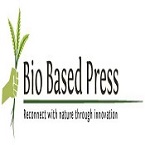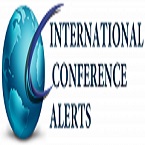Sessions/ Tracks
1. Dermatopathology
Dermatopathology is a specialized branch of pathology that focuses on the study of skin diseases at a microscopic and molecular level. This field combines aspects of dermatology and pathology, allowing dermatopathologists to diagnose a wide range of skin disorders by examining skin samples, such as biopsies, under a microscope. Their expertise is crucial in identifying conditions ranging from common skin diseases like psoriasis and eczema to more complex diseases like autoimmune disorders and skin cancers, including melanoma.Dermatopathologists utilize various techniques, including histopathology, immunohistochemistry, and molecular pathology, to analyze skin tissue samples. Histopathology involves staining and examining thin sections of tissue to observe the structure and composition of cells. Immunohistochemistry uses antibodies to detect specific antigens in the tissue, aiding in the diagnosis of certain skin conditions. Molecular pathology involves studying genetic and molecular changes in skin cells, providing deeper insights into the pathogenesis of skin diseases.Ongoing research and advancements in dermatopathology continually improve diagnostic techniques and our understanding of skin diseases, making it a dynamic and evolving field. Dermatopathologists play a critical role in bridging clinical dermatology and pathology, ensuring precise and timely diagnoses for better patient outcomes.
2. Skin Cancer
Skin cancer is one of the most common types of cancer, primarily caused by overexposure to ultraviolet radiation from the sun or tanning beds. It occurs when abnormal skin cells grow uncontrollably. There are three main types of skin cancer: basal cell carcinoma, squamous cell carcinoma, and melanoma.Basal cell carcinoma is the most common and least aggressive form, often appearing as a pearly or waxy bump on sun-exposed areas like the face and neck. Squamous cell carcinoma is more aggressive than basal cell carcinoma and can manifest as a firm, red nodule or a flat lesion with a scaly, crusted surface. Both types can cause significant local damage if left untreated but are generally less likely to spread.Melanoma is the most dangerous form of skin cancer, developing in the melanocytes, the cells responsible for skin pigment. It can appear as a new mole or a change in an existing mole, often characterized by asymmetry, irregular borders, multiple colors, and a diameter larger than a pencil eraser. Early detection and treatment are crucial, as melanoma can quickly spread to other parts of the body.Risk factors for skin cancer include fair skin, a history of sunburns, excessive UV exposure, a family history of skin cancer, and having many moles or atypical moles. Prevention strategies include regular use of sunscreen, wearing protective clothing, and avoiding peak sun hours.
3. Psychodermatology
Psychodermatology is a unique interdisciplinary field that bridges dermatology and psychiatry, focusing on the intricate relationship between the mind and the skin. This specialty addresses how psychological factors can influence skin conditions and how skin diseases can impact mental health. It recognizes that the skin and the nervous system are closely connected, sharing common embryonic origins and constantly interacting throughout a person's life. Conditions such as eczema, psoriasis, and acne can be exacerbated by stress, anxiety, and depression, demonstrating the psychosomatic link. Conversely, visible skin disorders can lead to significant emotional distress, contributing to issues like low self-esteem, social anxiety, and depression. Psychodermatology aims to break this cycle by addressing both the psychological and dermatological aspects of skin conditions. Treatment in psychodermatology often involves a combination of traditional dermatological therapies and psychological interventions. Cognitive-behavioural therapy, stress management techniques, and medications for anxiety or depression may be integrated with topical or systemic dermatologic treatments to achieve comprehensive care. The goal is not only to treat the skin condition but also to improve the patient's overall mental well-being. Research in psychodermatology continues to explore the complex interactions between the skin and the brain, uncovering new insights into how emotional and psychological states can influence skin health. This field highlights the importance of a holistic approach to treatment, considering the patient’s mental and emotional health alongside their physical symptoms.
4. Urticaria and Angioedema
Urticaria, commonly known as hives, is a skin condition characterized by red, itchy welts that can vary in size and shape. These welts often appear suddenly and may move around the body. Urticaria can be acute, lasting less than six weeks, or chronic, persisting for more than six weeks. Triggers for acute urticaria include allergic reactions to foods, medications, insect stings, or physical factors like heat, cold, and exercise. Chronic urticaria is often idiopathic, meaning its cause is unknown, though it may be associated with autoimmune disorders or chronic infections.Angioedema is closely related to urticaria but affects deeper layers of the skin, often resulting in swelling around the eyes, lips, throat, and sometimes the hands and feet. This swelling can be painful and, in severe cases, life-threatening if it leads to airway obstruction. Angioedema can occur with urticaria or independently. Common triggers include the same allergens that cause hives, as well as certain medications like ACE inhibitors used to treat high blood pressure.Both urticaria and angioedema result from the release of histamine and other chemicals from mast cells in the skin and mucous membranes. This release can be triggered by an immune response, direct mast cell activation, or non-immune mechanisms. Diagnosis typically involves a detailed patient history and, in some cases, allergy testing or blood tests to identify underlying conditions.Treatment focuses on relieving symptoms and avoiding triggers. Antihistamines are the first line of treatment for both conditions, helping to reduce itching and swelling. In more severe cases, corticosteroids, epinephrine, or immunosuppressive agents may be necessary. For chronic conditions, lifestyle modifications and stress management techniques can be beneficial.
5. Laser Surgery
Laser Surgery is an advanced medical technique that utilizes concentrated light beams to perform precise surgical procedures. The word "laser" stands for "Light Amplification by Stimulated Emission of Radiation," and this technology allows surgeons to target specific tissues with high accuracy. Laser surgery is employed across various medical disciplines, including dermatology, ophthalmology, oncology, and cosmetic surgery.In dermatology, laser surgery is used to treat conditions such as acne scars, vascular lesions, warts, and unwanted hair. The advantages of laser surgery over traditional methods are significant. It is less invasive, often resulting in reduced pain, minimal bleeding, and faster recovery times. The precision of laser technology allows for targeted treatment, preserving surrounding healthy tissues and leading to better cosmetic results. This precision is particularly beneficial in cosmetic procedures such as laser skin resurfacing, tattoo removal, and wrinkle reduction.In oncology, laser surgery is used to remove or shrink tumors, especially in areas that are difficult to reach with traditional surgery, like the throat, lungs, and rectum. Lasers can also seal nerve endings and lymph vessels, reducing pain and the risk of cancer spread during surgery. Despite its numerous benefits, laser surgery may not be suitable for all patients .As laser technology continues to advance, it promises even more precise and effective treatments, improving patient outcomes and broadening its applications in the medical field.
6. Acne and Rosacea
Acne and Rosacea are common skin conditions that can significantly impact an individual's appearance and self-esteem. Both conditions often affect the face, but they have distinct causes, symptoms, and treatments.Acne is primarily a disorder of the hair follicles and sebaceous glands, commonly occurring during adolescence due to hormonal changes. It is characterized by the presence of comedones (blackheads and whiteheads), pustules, papules, and sometimes cysts. These lesions result from a combination of excess oil production, clogged pores, bacteria, and inflammation. Acne can appear on the face, neck, chest, back, and shoulders. Treatment options include topical and oral medications like retinoids, benzoyl peroxide, antibiotics, and hormonal therapies.Rosacea, on the other hand, is a chronic inflammatory condition that usually begins in adulthood. It is marked by facial redness, visible blood vessels (telangiectasia), and often small, red, pus-filled bumps resembling acne. However, unlike acne, rosacea can also cause burning or stinging sensations, and in severe cases, it can lead to a thickening of the skin, especially around the nose (rhinophyma). The exact cause of rosacea is unknown, but factors such as genetics, immune system overreaction, and environmental triggers (like sunlight, spicy foods, and alcohol) can exacerbate the condition. Treatment typically involves topical and oral antibiotics, anti-inflammatory medications, and lifestyle modifications to avoid triggers.
7. Atopic Dermatitis
Atopic Dermatitis and other forms of dermatitis are inflammatory skin conditions that cause discomfort and affect the quality of life. Atopic dermatitis, commonly known as eczema, is a chronic condition that usually begins in childhood and can persist into adulthood. It is characterized by dry, itchy, and inflamed skin, often appearing on the face, elbows, knees, and wrists. The exact cause of AD is unknown, but it is believed to result from a combination of genetic predisposition, immune system dysfunction, and environmental factors. Common triggers include allergens, stress, temperature changes, and irritants like soaps and detergents.Treatment for atopic dermatitis focuses on reducing symptoms and preventing flare-ups. This typically involves the use of moisturizers to maintain skin hydration, topical corticosteroids to reduce inflammation, and antihistamines to alleviate itching. In severe cases, systemic medications or phototherapy may be necessary. Avoiding known triggers and maintaining a regular skincare routine are also crucial in managing the condition.Other types of dermatitis include contact dermatitis, seborrheic dermatitis, and nummular dermatitis. Contact dermatitis occurs when the skin reacts to direct contact with irritants or allergens, leading to redness, itching, and blistering at the site of contact. Common culprits include chemicals, plants like poison ivy, and certain metals. Treatment involves identifying and avoiding the offending substance and using topical treatments to soothe the skin.Seborrheic dermatitis is a chronic condition that primarily affects areas rich in oil glands, such as the scalp, face, and upper chest. It causes scaly, itchy, and red patches and is often associated with dandruff. The exact cause is not well understood, but it may involve a combination of genetic, hormonal, and environmental factors, along with the presence of a yeast called Malassezia. Treatment includes antifungal shampoos, topical corticosteroids, and anti-inflammatory creams.
8. Autoimmune and Systemic Diseases
Autoimmune and Systemic Diseases encompass a wide range of conditions where the immune system mistakenly attacks the body's own tissues, leading to chronic inflammation and damage. These diseases can affect multiple organs and systems, making diagnosis and treatment complex.Autoimmune diseases occur when the immune system loses its ability to distinguish between self and non-self, attacking healthy cells. Common autoimmune diseases include rheumatoid arthritis (RA), lupus, multiple sclerosis (MS), and type 1 diabetes. Rheumatoid arthritis primarily affects the joints, causing pain, swelling, and stiffness. Lupus (systemic lupus erythematosus) can impact the skin, joints, kidneys, and other organs, presenting with symptoms like fatigue, joint pain, and skin rashes. Multiple sclerosis targets the central nervous system, leading to neurological symptoms such as muscle weakness, vision problems, and coordination difficulties. Type 1 diabetes involves the immune system attacking insulin-producing cells in the pancreas, resulting in high blood sugar levels.Systemic diseases are conditions that affect multiple organs and tissues or the entire body. Examples include systemic sclerosis (scleroderma), vasculitis, and sarcoidosis. Systemic sclerosis is characterized by the hardening and tightening of the skin and connective tissues, which can also affect internal organs like the lungs, heart, and digestive system. Vasculitis involves inflammation of blood vessels, leading to reduced blood flow and potential damage to organs and tissues. Sarcoidosis is marked by the formation of granulomas clusters of inflammatory cells in various organs, most commonly the lungs and lymph nodes. Diagnosis of autoimmune and systemic diseases often involves a combination of clinical evaluation, laboratory tests, and imaging studies. Treatment typically aims to reduce immune system activity, manage symptoms and prevent organ damage. This can include medications such as corticosteroids, immunosuppressants and biologics. Lifestyle changes, physical therapy and supportive care are also important aspects of managing these conditions. Due to their chronic nature, patients often require ongoing monitoring and adjustments to their treatment plans.
9. Pediatric Dermatology
Pediatric Dermatology is a specialized branch of dermatology focused on diagnosing and treating skin conditions in infants, children, and adolescents. This field addresses a wide range of skin issues, from common conditions like eczema and diaper rash to more complex genetic disorders and birthmarks.Atopic dermatitis, or eczema, is one of the most frequent pediatric skin conditions, characterized by itchy, inflamed skin that often affects the face, elbows, and knees. Effective management involves moisturizing, avoiding triggers, and using topical treatments to control inflammation. Diaper rash, another common concern, results from prolonged exposure to moisture and irritants. Treatment includes frequent diaper changes and the use of barrier creams.Birthmarks, including hemangiomas and port-wine stains, often require specialized care. Hemangiomas are benign vascular tumors that typically appear shortly after birth, sometimes necessitating medical or laser treatment to prevent complications. Port-wine stains are flat, red to purple birthmarks that can be treated with laser therapy for cosmetic and health reasons.Pediatric dermatologists also manage conditions like psoriasis, which can present differently in children compared to adults, often appearing in the diaper area or as guttate psoriasis following a streptococcal infection. Molluscum contagiosum and warts, caused by viral infections, are also common in pediatric patients and may require treatments ranging from topical therapies to cryotherapy.
10. Psoriasis and Papulosquamous Disorders
Psoriasis and Papulosquamous Disorders are chronic skin conditions characterized by the presence of raised, scaly patches on the skin surface. Psoriasis is the most common papulosquamous disorder, affecting approximately 2-3% of the global population. It is caused by an overactive immune system triggering rapid skin cell turnover, leading to the formation of thick, red patches with silvery scales. These patches commonly appear on the scalp, elbows, knees, and lower back.Other papulosquamous disorders include seborrheic dermatitis, pityriasis rosea, and lichen planus. Seborrheic dermatitis is characterized by red, itchy, and greasy scales that primarily affect oily areas of the skin such as the scalp, face, and chest. It can also manifest as dandruff or cradle cap in infants.Pityriasis rosea presents as a single, large, scaly patch (herald patch) followed by smaller patches that form a Christmas tree-like pattern on the trunk and limbs. It is believed to be triggered by viral infections and typically resolves on its own within a few weeks to months.Lichen planus is an inflammatory condition that affects the skin, mucous membranes, nails, and hair follicles. It presents as shiny, flat-topped, purplish bumps that may be itchy or painful. Lichen planus can occur on the wrists, ankles, lower back, and genitals, as well as in the mouth and nails.Diagnosis of papulosquamous disorders often involves a combination of clinical evaluation, skin biopsy, and sometimes blood tests to rule out underlying conditions. Treatment varies depending on the specific disorder and its severity. Topical treatments such as corticosteroids, coal tar preparations, and vitamin D analogs are commonly used for mild to moderate cases. For more severe or resistant cases, systemic treatments including oral medications and biologic therapies may be prescribed.Managing papulosquamous disorders requires ongoing care and monitoring to alleviate symptoms, prevent flare-ups, and minimize potential complications. Dermatologists play a crucial role in developing individualized treatment plans that address the unique needs and preferences of each patient. Research continues to advance our understanding of these complex disorders, leading to improved diagnostic techniques and therapeutic options for better outcomes.
11. Hair and Nails
Hair and Nails are essential components of the human integumentary system, playing crucial roles in protection, sensation, and aesthetics. Hair is primarily composed of keratin, a robust protein that forms from hair follicles located in the skin. Hair growth and health are influenced by genetics, hormonal levels, nutritional status, and environmental factors. Common hair-related conditions include alopecia (hair loss), dandruff, seborrheic dermatitis, and psoriasis, all of which can impact self-esteem and overall well-being.Nails, also made of keratin, grow from the nail matrix found beneath the cuticle. They serve to protect the sensitive tips of fingers and toes and enhance fine motor skills. Nail health is a significant indicator of general health, as changes in nail color, texture, or growth patterns can signify underlying medical conditions. For example, yellow nails may indicate fungal infections, while pitting can be a sign of psoriasis or other dermatological issues.Common nail conditions include onychomycosis (fungal infections), paronychia (infection of the nail fold), ingrown nails, and brittle nails. Trauma, nutritional deficiencies, and systemic diseases often manifest through changes in nail appearance and structure.In dermatology, the assessment of hair and nails involves a thorough clinical examination, sometimes supplemented by microscopic analysis, culture tests or biopsies. Treatments vary widely depending on the condition and may include topical or systemic medications, lifestyle modifications.
12. Cryotherapy
Cryotherapy, also known as cryosurgery is a dermatological treatment that uses extreme cold to freeze and destroy abnormal or diseased tissue. This technique is commonly applied using liquid nitrogen, which reaches temperatures as low as -196°C (-321°F). The cold causes the water in the cells to freeze, leading to cellular destruction and subsequent tissue death. Cryotherapy is effective for a variety of skin conditions, including warts, skin tags, actinic keratosis, and certain small skin cancers like basal cell carcinoma and squamous cell carcinoma.The procedure is typically quick and minimally invasive, often performed in an outpatient setting. Patients might experience a brief sensation of cold and discomfort during the treatment, followed by redness, swelling, and blistering as the treated area heals. Recovery times vary depending on the size and depth of the treated lesion but generally range from a few days to a couple of weeks.Cryotherapy offers several advantages, including low cost, minimal preparation, and a reduced risk of infection compared to more invasive surgical techniques. However, it may not be suitable for all patients or all types of lesions, particularly larger or deeper ones. Potential side effects include hypopigmentation or hyperpigmentation, scarring, and, in rare cases, nerve damage if applied near nerve-rich areas.In recent years, advances in cryotherapy have expanded its applications beyond dermatology, including treatments for prostate cancer, cervical dysplasia, and even cosmetic procedures like cryolipolysis for fat reduction. As with any medical procedure, it is important for patients to discuss potential risks and benefits with their healthcare provider to determine if cryotherapy is the appropriate treatment for their condition.
13. Plastic and Reconstructive Surgery
Plastic and Reconstructive Surgery is a specialized branch of surgery that focuses on repairing, reconstructing or enhancing physical features of the body. Plastic surgery is divided into two main categories: reconstructive surgery and cosmetic (aesthetic) surgery.Reconstructive surgery aims to restore the function and appearance of body parts affected by congenital defects, trauma, infections, tumors or diseases. Common procedures include breast reconstruction after mastectomy, cleft lip and palate repair, hand surgery and skin grafts for burn victims. The primary goal is to improve both the functionality and aesthetics of the affected areas, often significantly enhancing the patient's quality of life.Cosmetic surgery, on the other hand, focuses on enhancing the appearance of body parts that are already functioning normally but may not meet the patient’s aesthetic desires. Popular procedures include rhinoplasty (nose reshaping), facelift, liposuction, breast augmentation, and tummy tucks. These surgeries are generally elective and aim to boost self-esteem and confidence by improving physical appearance.Plastic and reconstructive surgeons use a variety of advanced techniques, including microsurgery, flap procedures, tissue expansion, and laser surgery. Microsurgery involves using a microscope to repair tiny blood vessels and nerves, essential in procedures like reattaching severed fingers. Flap procedures involve moving living tissue from one part of the body to another, maintaining its blood supply, which is crucial in reconstructive surgeries.
14. Surgical and Cosmetic Dermatology
Surgical and Cosmetic Dermatology encompasses a wide range of procedures aimed at treating skin conditions and enhancing physical appearance. These fields blend medical expertise with aesthetic principles to improve both health and beauty. Surgical Dermatology focuses on the diagnosis and treatment of skin cancers, removal of benign and malignant growths, and repairing skin damage. Common procedures include excisions, Mohs surgery, and skin grafts. Mohs surgery is particularly noteworthy for its high cure rate in treating basal cell carcinoma and squamous cell carcinoma by precisely removing cancerous tissue while preserving as much healthy tissue as possible. Other procedures include electrosurgery, cryosurgery, and laser surgery, which are used to remove warts, moles, and other skin lesions. Cosmetic Dermatology, on the other hand, deals with enhancing the appearance of the skin. Treatments in this field include injectables like Botox and dermal fillers, which reduce wrinkles and add volume to the face. Chemical peels and microdermabrasion help improve skin texture and tone by exfoliating the top layers of skin. Laser treatments are employed to address a variety of issues, such as hair removal, vascular lesions and pigmentation disorders.Aesthetic treatments also include non-invasive body contouring techniques, such as Cool Sculpting, which uses cryolipolysis to reduce fat deposits and radiofrequency treatments that tighten the skin and reduce cellulite.
15. Aesthetic Dermatology
Aesthetic Dermatology is a specialized branch of dermatology focused on enhancing the appearance of the skin, hair, and body through non-surgical and minimally invasive procedures. This field blends medical expertise with artistic sensibility to help patients achieve their aesthetic goals, improve self-esteem and boost confidence.
Aesthetic dermatologists perform a variety of procedures, including:
-
Injectables: These include Botox and dermal fillers. Botox is used to reduce the appearance of dynamic wrinkles by temporarily paralyzing muscles, while fillers like hyaluronic acid add volume to areas such as lips, cheeks, and under-eye hollows to smooth out wrinkles and enhance facial contours.
-
Laser Treatments: Lasers are used for a range of cosmetic purposes, such as removing unwanted hair, treating vascular lesions, and improving skin texture and tone. Popular treatments include laser resurfacing for reducing wrinkles and scars and laser therapy for pigmentation disorders like melasma and age spots?.
-
Chemical Peels: These involve applying a chemical solution to the skin to exfoliate and remove damaged outer layers. Chemical peels can treat fine lines, acne scars, sun damage, and uneven skin tone, promoting smoother and more radiant skin.
-
Microneedling: This procedure uses fine needles to create micro-injuries in the skin, stimulating collagen production and improving the appearance of fine lines, scars, and overall skin texture.
-
Non-Surgical Fat Reduction: Techniques such as cryolipolysis (CoolSculpting) and radiofrequency treatments help reduce localized fat deposits without surgery. These procedures target and destroy fat cells, resulting in a more contoured body shape.
-
PRP (Platelet-Rich Plasma) Therapy: PRP involves injecting concentrated platelets from the patient's own blood into the skin to promote healing and rejuvenation. It's used to improve skin texture, reduce fine lines, and enhance overall skin tone.
-
Skin Tightening: Technologies like ultrasound (Ultherapy) and radiofrequency (Thermage) stimulate collagen production, resulting in firmer and more lifted skin without surgery
Aesthetic dermatology is continually advancing with new technologies and techniques that provide safer, more effective and less invasive options for patients. This field plays a crucial role in helping individuals achieve their desired appearance, enhancing both their physical look and psychological well-being.
16. Cosmeceuticals
Cosmeceuticals are a hybrid category of products that lie at the intersection of cosmetics and pharmaceuticals. These advanced skincare solutions are designed to enhance beauty while delivering therapeutic benefits. Unlike traditional cosmetics, which primarily focus on improving appearance, cosmeceuticals contain active ingredients that can positively affect the skin's biological functions. These ingredients, often derived from scientific research, include vitamins, peptides, antioxidants, and botanical extracts.Cosmeceuticals are formulated to address a variety of skin concerns such as aging, acne, hyperpigmentation, and inflammation. They work by penetrating deeper into the skin layers to exert their effects at a cellular level, promoting healthier, more radiant skin. Products in this category can range from anti-aging serums and creams to specialized treatments for specific skin issues.The effectiveness of cosmeceuticals lies in their scientifically backed formulations. For instance, retinoids are widely used for their anti-aging properties, while hyaluronic acid is prized for its hydrating capabilities. The growing demand for cosmeceuticals is driven by consumers seeking more effective and targeted skincare solutions.Regulation of cosmeceuticals varies globally with some countries requiring stringent testing and approval processes similar to pharmaceuticals, while others classify them under cosmetic regulations. This disparity highlights the need for consumers to be well-informed and selective when choosing these products.The cosmeceutical industry continues to innovate, incorporating cutting-edge research from dermatology and biotechnology to develop new, potent formulations. As consumer awareness and interest in skin health rise, the cosmeceutical market is poised for significant growth, offering promising advancements in skincare science.
17. Immunodermatology
Immunodermatology is a specialized branch of dermatology focused on the study and treatment of skin disorders related to the immune system. This field investigates the complex interactions between the skin and the immune system, aiming to understand and manage conditions where immune dysfunction plays a central role. Key diseases addressed in immunodermatology include autoimmune skin disorders such as psoriasis, lupus erythematosus, and vitiligo, as well as allergic reactions like eczema and contact dermatitis.The skin, as the body's largest organ, serves as a critical barrier and is constantly exposed to environmental antigens, making it a vital component of the immune response. Immunodermatologists use a variety of diagnostic tools to assess immune-related skin conditions, including skin biopsies, immunofluorescence, and blood tests to detect specific antibodies or immune markers.Treatment approaches in immunodermatology often involve immunomodulatory therapies, which can range from topical corticosteroids and calcineurin inhibitors to systemic treatments like biologics and immunosuppressants. Biologics, which are engineered to target specific components of the immune system, have revolutionized the management of chronic autoimmune skin diseases, providing significant relief for patients with severe conditions.Research in immunodermatology is dynamic and evolving, with ongoing studies aimed at uncovering the underlying mechanisms of immune-related skin diseases and developing new, more effective treatments. Advancements in this field hold promise for improving the quality of life for patients suffering from chronic and often debilitating skin conditions.
18. Dermatovenerology
Dermatovenerology is a medical specialty that combines the study and treatment of skin disorders (dermatology) with sexually transmitted infections (venereology). This field addresses a wide range of conditions affecting the skin, hair, and nails, as well as diseases transmitted through sexual contact. Dermatovenerologists are trained to diagnose and manage both dermatological issues and sexually transmitted infections (STIs), providing comprehensive care that spans both domains.Key skin conditions treated in dermatovenerology include acne, eczema, psoriasis, and dermatitis, alongside hair and nail disorders like alopecia and fungal infections. In the realm of venereology, specialists focus on infections such as syphilis, gonorrhea, chlamydia, herpes, and human papillomavirus (HPV). These practitioners play a crucial role in early detection, prevention, and management of STIs, which can have significant health implications if left untreated.The practice of dermatovenerology involves a variety of diagnostic techniques including visual examinations, skin biopsies, serological tests, and molecular diagnostics to identify pathogens. Treatment strategies encompass topical and systemic medications, cryotherapy, laser therapy, and surgical interventions, depending on the nature and severity of the condition.Preventive care and patient education are integral aspects of dermatovenerology. Specialists often engage in counseling patients on safe sexual practices, the importance of regular STI screenings, and effective skin care routines to prevent and manage skin disorders.
19. Vitiligo
Vitiligo is a chronic skin condition characterized by the loss of pigment, resulting in white patches on various parts of the body. This occurs when melanocytes, the cells responsible for producing melanin (the pigment that gives skin its color), are destroyed. The exact cause of vitiligo is not fully understood, but it is believed to involve a combination of genetic, autoimmune, and environmental factors.Vitiligo can affect people of all skin types and ages, though it often appears before the age of 30. The condition typically manifests as well-defined, depigmented patches that can occur anywhere on the body, including the face, hands, feet, and genitals. It can also affect hair, turning it white or gray if the melanocytes in the hair follicles are involved.There are different types of vitiligo, including segmental (affecting one side or part of the body) and non-segmental (more common, with symmetrical patches). The progression of the disease is unpredictable, and the extent of pigment loss can vary widely among individuals.Diagnosis of vitiligo is primarily based on clinical examination, and sometimes a skin biopsy or blood tests are conducted to rule out other conditions. Although vitiligo is not physically painful, it can have significant psychological and social impacts due to its visible nature.Treatment options aim to restore color to the white patches or even out skin tone. These include topical corticosteroids, calcineurin inhibitors, phototherapy, and in some cases, surgical procedures like skin grafting. Newer treatments, such as Janus kinase (JAK) inhibitors and other immunomodulatory drugs are being researched and show promise.
Market Analysis
Market analysis :
According to Research Reports, the global dermatology devices market size was estimated at USD 15.31 billion in 2023 and it is projected to hit around USD 50.43 billion by 2033, growing at a CAGR of 12.66% from 2024 to 2033. The dermatology devices market is driven by a confluence of factors including technological advancements, rising prevalence of skin disorders, and increasing awareness regarding aesthetic procedures.
Key Takeaways
In 2023, North America held the largest market share at 44%, establishing its dominance in the market.
Among production categories, treatment devices claimed the top position with an 80% revenue share in 2023.
The hair removal application emerged as the leader in generating the maximum market share in 2023.
Hospitals emerged as the dominant segment in terms of end-use, leading the market in 2023.
Top Trends in the Dermatology Devices Market
Rising Demand for Minimally Invasive Procedures: People are increasingly opting for minimally invasive procedures that offer faster recovery times and fewer side effects. This trend is fueling the growth of devices like lasers, light therapy devices and radiofrequency devices for skin tightening.
Focus on Early Skin Cancer Detection: With growing awareness about skin cancer, there's a surge in demand for advanced diagnostic tools. This includes sophisticated dermatoscopes with improved image quality and artificial intelligence (AI)-powered systems that can assist in skin cancer screening.
Technological Advancements: The market is constantly evolving with new technologies like fractional lasers, picosecond lasers, and robotic-assisted surgical devices offering more precise and effective treatments.
Challenges Related to Dermatology Devices Market
Limited Reimbursement: Varying reimbursement policies globally can impede adoption rates, especially for novel or expensive treatments.
Training and Education: Proper training for healthcare professionals is essential for effective device utilization, but providing comprehensive education programs can be challenging for manufacturers.
Competition: Intense competition in the market requires continuous differentiation and innovation to maintain market share and profitability.
Safety Concerns: Ensuring the safety and efficacy of dermatology devices is crucial to maintaining consumer trust and regulatory compliance.
Opportunities in the Dermatology Devices Market
Advancements in Technology: Continuous innovation presents opportunities for manufacturers to develop novel, more effective, and affordable dermatology devices.
Emerging Markets: Growing healthcare infrastructure and rising disposable incomes in emerging markets offer significant growth opportunities for dermatology device manufacturers.
Telemedicine Integration: The increasing adoption of telemedicine provides opportunities for manufacturers to develop remote monitoring and treatment devices.
Personalized Medicine: Tailoring treatments to individual patient needs opens avenues for the development of customized dermatology devices.
Patient-Centric Solutions: Developing user-friendly devices that prioritize patient comfort and convenience can drive market adoption.
Product Insights
The treatment devices segment dominated the market with a share of approximately 80% in 2023 and is projected to maintain the highest compound annual growth rate (CAGR) throughout the forecast period. This is primarily due to the broad spectrum of applications offered by dermatological treatment devices. Furthermore, the introduction of novel technologies within the laser device category has significantly contributed to the robust growth observed in this segment. Conversely, the relatively lower market share of diagnostic devices can be attributed to limited awareness regarding emerging diagnostic instruments. Nevertheless, the escalating prevalence of skin cancer is expected to bolster the growth trajectory of this segment in the forthcoming years.Within the treatment devices category, laser products commanded the largest market share in 2023 and are poised to exhibit the most substantial growth over the forecast period, driven by their widespread adoption. Conversely, dermatoscopes emerged as the dominant segment within the diagnostic devices category in 2023, owing to the availability of advanced technological features.The dermatology diagnostic devices market is forecasted to witness notable expansion over the forecast period, fueled by the escalating prevalence of dermatological conditions on a global scale. The surge in skin disorders, coupled with heightened awareness regarding early detection and treatment, has propelled the demand for advanced diagnostic devices within the dermatology devices market.
Application Insights
In 2023, the hair removal application segment emerged as the market leader, holding the largest share. Within the treatment application segment, hair removal is one of several categories, including skin rejuvenation, acne treatment, psoriasis management, tattoo removal, wrinkle reduction, skin resurfacing, body contouring, fat removal, cellulite reduction, vascular and pigmented lesion removal, and others.According to data from the International Society of Aesthetic Plastic Surgery, plastic surgeons worldwide reported a substantial increase in procedures performed in 2022. The statistics revealed an 11.2% rise in overall procedures, with over 14.9 million surgical and 18.8 million non-surgical procedures conducted globally. This trend underscores the increasing demand for aesthetic treatments, which will directly influence the adoption of advanced and efficient dermatology devices.
End-Use Insights
In 2023, the hospital segment dominated the market, holding the largest share, primarily due to the presence of advanced dermatology equipment within hospital settings. Additionally, the wide array of treatment options available in these facilities has contributed to an increased number of visits for skin disease diagnosis and treatment.The demand for specialized skin care treatments has prompted patients to seek services from specialty dermatology clinics, resulting in significant growth in this segment. Moreover, the global rise in the prevalence of skin cancer and melanoma, coupled with the growing number of clinics offering skin care services, has further bolstered patient visits to dermatology clinics for treatment and care.Clinics serve as both cosmetic and medical facilities specializing in the diagnosis and treatment of various skin conditions. They provide a range of services, including both surgical and nonsurgical procedures, administered by certified plastic surgeons. According to Triple Tree, as of 2020, there were 9,000 dermatology practices and 14,000 dermatologists in the United States. Among these practices, 34% operated as solo practices, while 48% included three or more physicians.
Regional Insights
In 2023, North America held the largest revenue share in the market, accounting for 44%. This dominance is attributed to several factors, including the rising prevalence of skin cancer and other skin conditions such as acne, eczema, and rosacea. Additionally, the increasing adoption of cosmetic procedures has contributed to market growth in this region.The U.S. dermatology device market is projected to sustain its growth momentum in the upcoming years. This growth will be driven by factors such as the growing demand for non-invasive and minimally invasive treatments, continuous advancements in technology, the introduction of new devices, and the escalating prevalence of skin care diseases. According to the Centers for Disease Control and Prevention (CDC), Acne vulgaris affects 80% of the U.S. population at some point in their lives, with 20% experiencing severe acne, which can lead to permanent physical and mental scarring.
Market News Related to Dermatology Devices Market
-
In April 2023, Canfield Scientific obtained certification for its quality management system, meeting the ISO 9001:2015 and ISO 13485:2016 standards.
-
In February 2023, Candela Corporation, a leading global manufacturer of medical aesthetic devices, announced that Health Canada had licensed and made available two of its innovative platforms: the dual-wavelength Frax Pro non-ablative fractional laser platform and the Nordlys multi-application platform featuring Selective Waveband Technology (SWT).














